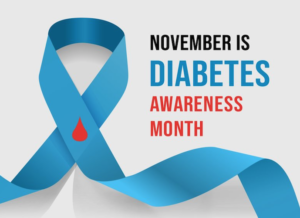Let’s Start a Conversation about Diabetes

What is Diabetes?
Diabetes Mellites comes from the Greek words diabetes—to siphon or pass through and mellites—honeyed or sweet. It is a condition of excess sugar in the blood. Blood sugar, glucose, does damage to blood cells, veins, arteries and other tissues, leading to some of the common outcomes, such as blindness, neuropathy, digestive problems, kidney damage and heart disease.
There are two types of diabetes.
Type 1 is genetic and chronic. This is a condition where the pancreas produces little or no insulin. People with type 1 diabetes are able to manage their condition with a combination of insulin, dietary changes and exercise. A normal, comfortable life can be achieved when the disease is properly diagnosed and treated.
Type 2 diabetes, has also been known as adult onset diabetes, but now we know that it can come on any time in life. We also know that type 2 diabetes is both preventable and reversible.
For this conversation, let’s focus on type 2 diabetes.
1 in 10 Americans (34.2 million of us) have been diagnosed with type 2 diabetes
Most of us know someone, work with someone or have someone in our family with type 2 diabetes.
Why is diabetes so common?
The modern Western diet is the biggest culprit. Since the mid 1900’s many foods are produced in factories and have added sugar and high fructose corn syrup. Foods like soda, candy, packaged baked goods and fast food have made high calorie, high carb foods convenient and plentiful, contributing to excessive sugar in the blood, inadequate insulin response, insulin resistance and other metabolic disorders.
When we eat foods high in sugar, especially high fructose corn syrup, the appetite for more sugar is stimulated, creating a cycle of excessive blood sugar, followed by the need for more insulin. Eventually the pancreas wears out and can’t keep up with insulin production, or tissue cells become insulin resistant, weary from receiving excessive sugar for energy.
A sedentary lifestyle is another large factor contributing to increased numbers of people developing diabetes. Our life of office work, computer gaming, and television entertainment make us less active and needing far less sugar than we are consuming.
What is homeostasis?
Our bodies have mechanisms to create homeostasis, or balance. We have hormones that do opposite jobs. Insulin and glucagon are two such hormones that do opposite jobs, and in a well functioning body, they act appropriately to create balance. For example, insulin facilitates fat storage, while glucagon releases fat to be used for energy. Insulin increases cholesterol, while glucagon reduces cholesterol. Insulin increases blood pressure, glucagon lowers it. As you can see, dominance of insulin can create a host of secondary conditions with risks of their own. Treating diabetes with insulin keeps blood sugar balanced, but doesn’t reduce the likelihood, and may even exacerbate/increase of these secondary conditions.
Treatment of diabetes
Diabetes is treated in multiple ways, and usually a combination of methods. Glucose reducing medications or medications that improve insulin response are among the most common. Diet and lifestyle changes are also used, but require education and compliance.
What can we do to create awareness?
Spread the word that diabetes is preventable and reversible! Use the buttons below to share or send this article to people in your circle who are at risk or who have diabetes.
Learn about dietary and lifestyle changes you can make to improve your own metabolic health.
Go see your doctor every year to find out if you are at risk for diabetes or if you are prediabetic.
Take this survey to continue the conversation and share it to raise awareness.




